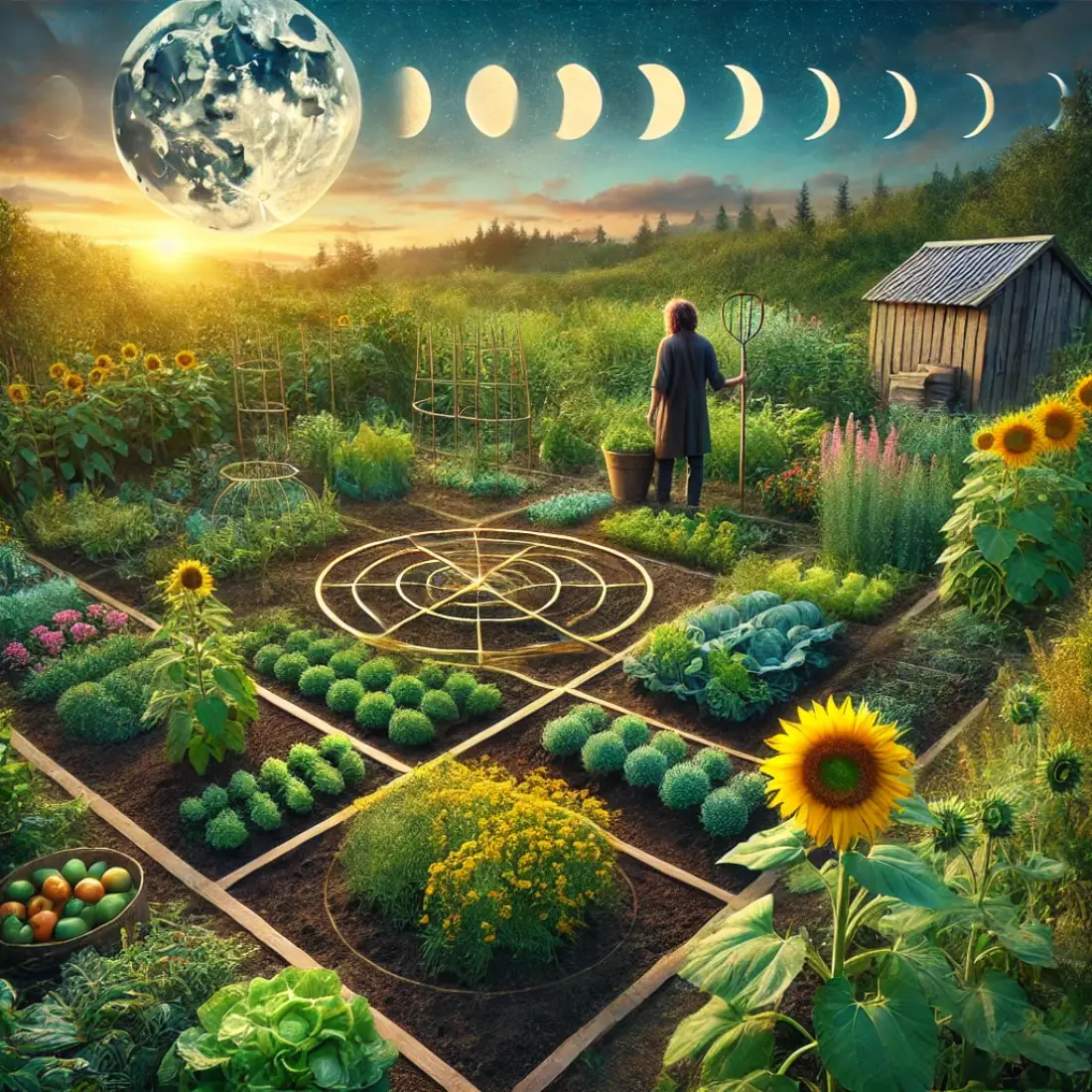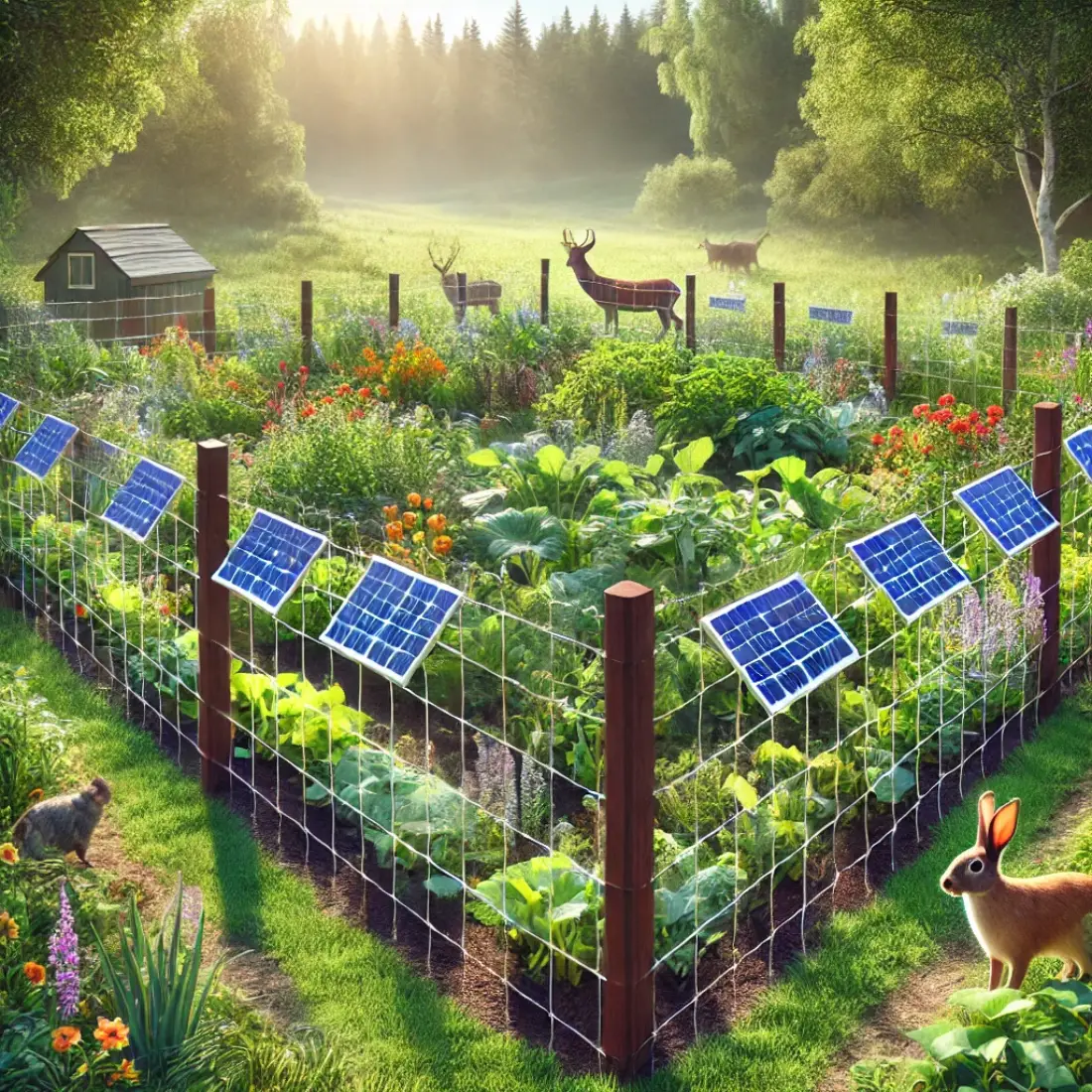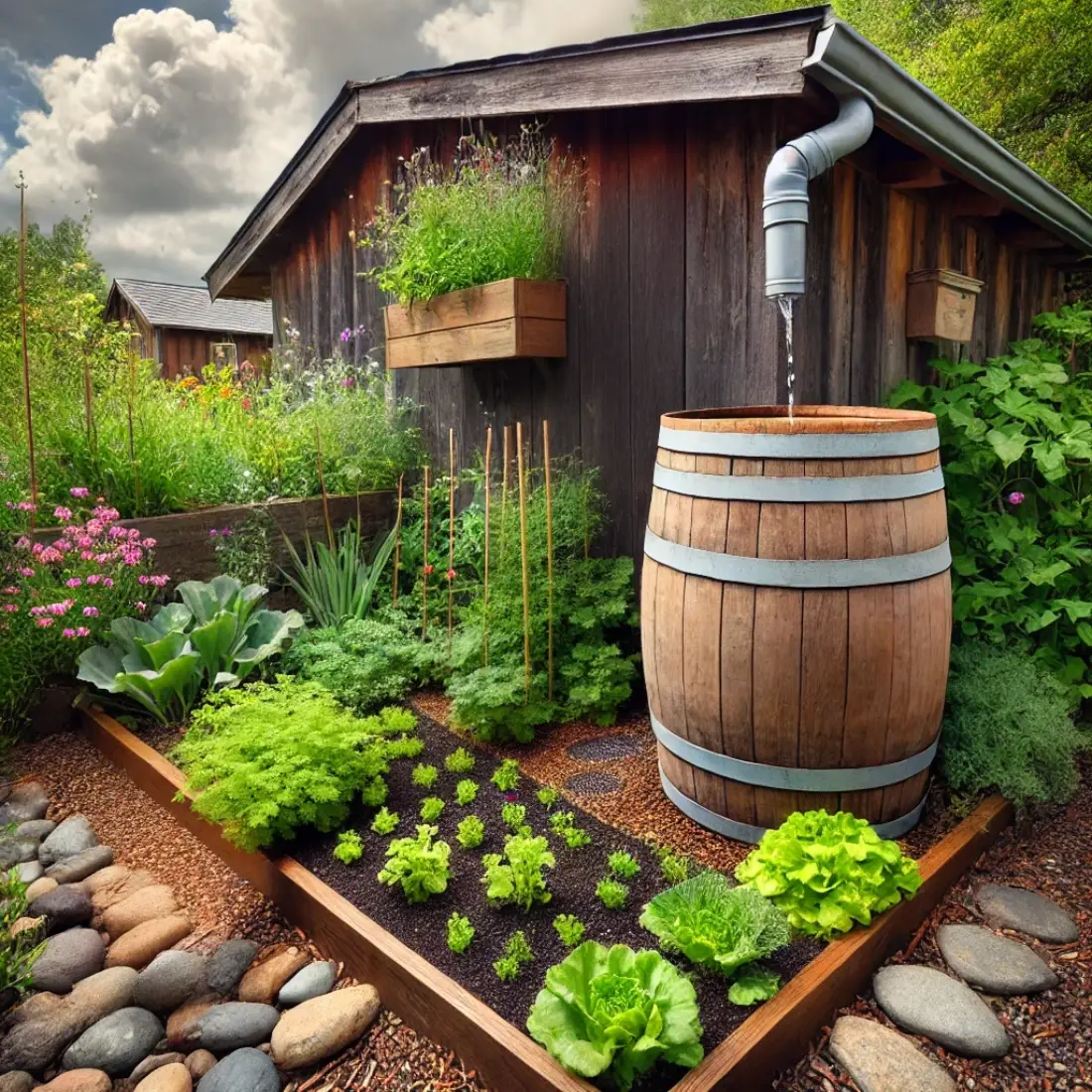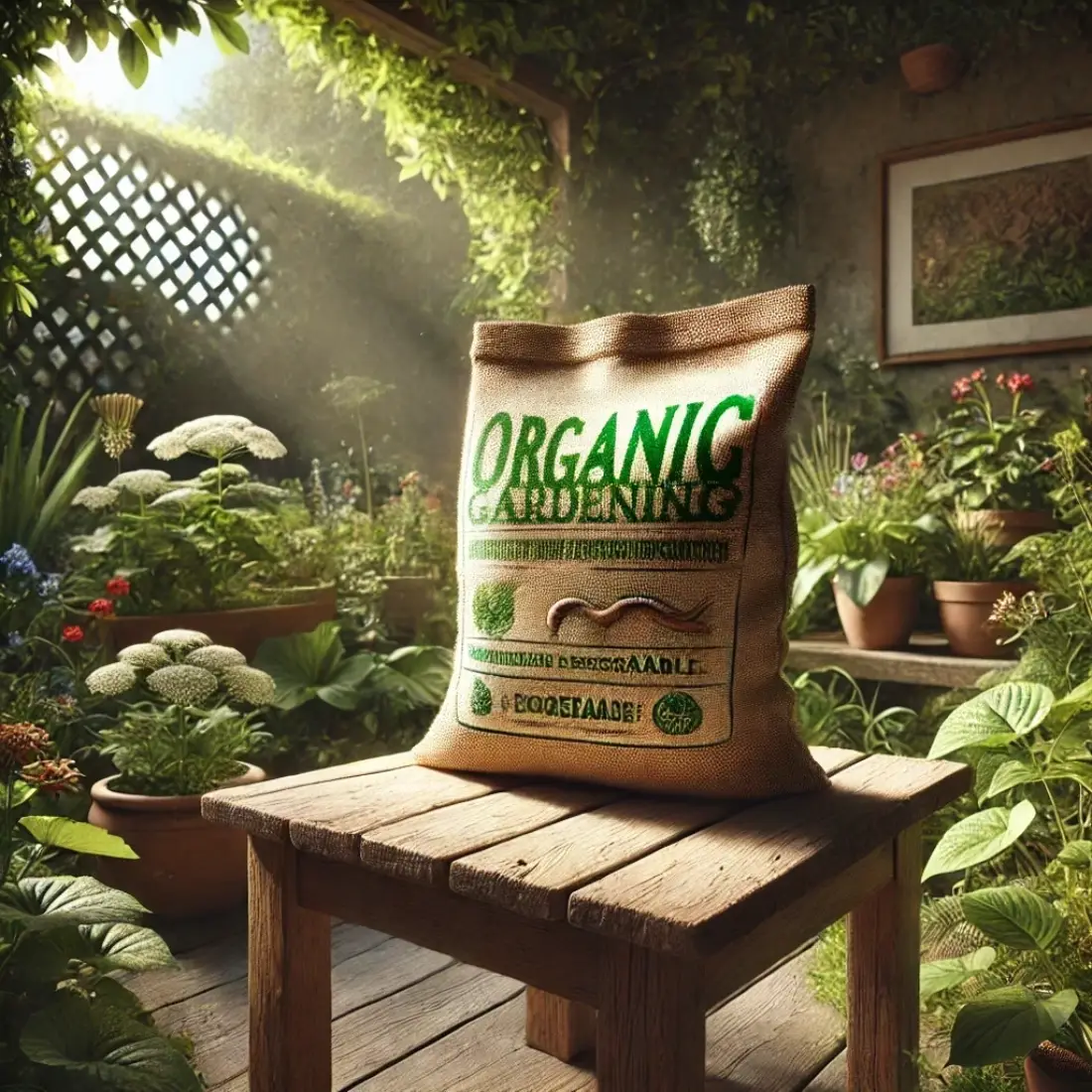Biodynamic gardening is a holistic approach to growing plants, based on the belief that lunar cycles and cosmic rhythms deeply influence plant growth. By aligning gardening activities—such as planting, harvesting, and composting—with specific moon phases, biodynamic gardeners aim to enhance the vitality of their soil and crops.
This method goes beyond organic gardening by integrating spiritual and ecological practices, striving to create a self-sustaining garden ecosystem.
- Biodynamic gardening combines organic practices with spiritual and cosmic principles.
- It follows lunar cycles to optimize planting, harvesting, and soil health.
- Soil vitality is enhanced using special biodynamic preparations like cow manure and herbal composting.
- The garden is treated as a self-sustaining ecosystem, reducing reliance on synthetic inputs.
- Biodynamic farming produces more resilient, nutritious, and flavorful crops.
- Aligning gardening activities with natural rhythms fosters biodiversity and sustainability.
- Ideal for those looking to garden holistically, improving both the environment and plant life quality.
What is Biodynamic Gardening?
Biodynamic gardening is a holistic, ecological approach to gardening that incorporates organic principles and aligns with the lunar cycles and cosmic rhythms. Developed by Rudolf Steiner in the 1920s, it views the garden or farm as a self-sustaining organism, with every element—soil, plants, animals, and even celestial influences—working together to promote healthy, vibrant ecosystems.
A key feature of biodynamic gardening is the use of biodynamic preparations, such as fermented manure, herbal compost additives, and silica sprays, to enhance soil fertility and plant vitality. These practices are often timed to the phases of the moon, believed to affect water absorption, root development, and plant growth.
Unlike conventional organic gardening, biodynamics integrates spiritual and cosmic elements, emphasizing the gardener’s relationship with nature. The goal is not just to grow healthy plants but to cultivate a balanced, sustainable ecosystem that nourishes both soil and soul.
The Role of Lunar Cycles in Biodynamic Gardening
In biodynamic gardening, the lunar cycles play a crucial role in determining when to plant, prune, harvest, and cultivate. The phases of the moon are believed to affect the movement of water in plants, much like they influence tides on Earth. During the new moon and waxing moon, moisture is drawn upwards, encouraging leaf and stem growth, making it an ideal time for planting crops that grow above ground.
As the moon moves into the full moon, the gravitational pull stimulates root development, which is perfect for root crops like carrots and potatoes. The waning moon is best for pruning, transplanting, and harvesting since energy shifts downward, focusing on root stabilization.
By aligning gardening activities with these natural rhythms, biodynamic gardeners believe they can enhance plant growth, boost yields, and improve the overall health of their garden ecosystem.
Biodynamic Gardening by Moon Phases
- New Moon (Leafy Crops)
The upward pull of the new moon supports leafy crops like lettuce and spinach. Seeds germinate quickly, focusing on leaf and stem growth. - Waxing Moon (Above-Ground Plants)
As the moon grows, moisture continues rising, ideal for fruits, seeds, and flowers (e.g., tomatoes, cucumbers). It’s also good for grafting and fertilizing. - Full Moon (Root Crops & Transplants)
The full moon enhances root growth, perfect for planting root veggies like carrots and onions. It’s also a good time for transplanting and pruning. - Waning Moon (Pruning & Harvesting)
The moon’s energy shifts downward, great for pruning, weeding, and harvesting. Plants store moisture better, ideal for long-term storage.
Additional Guidelines
- Ascendant/Descendant Moon: Some days favor root growth (earth signs), others support leaf or fruit growth (water, air, fire signs).
- Root, Leaf, Flower, and Fruit Days: Specific days are best for different plants, depending on the moon’s zodiac position.
Core Biodynamic Gardening Practices
Core biodynamic gardening practices focus on creating a self-sustaining ecosystem that nurtures soil health and plant vitality. Central to this approach are biodynamic preparations, such as Preparation 500, which involves burying cow manure in cow horns to ferment over winter. This is then sprayed to enhance soil structure and microbial activity. Preparation 501, made from ground quartz and applied in the growing season, boosts photosynthesis.
Composting is another vital practice. Biodynamic compost is enriched with specific herbs like yarrow, nettle, and dandelion, which add minerals and promote healthy decomposition.
Crop rotation and companion planting are also used to maintain biodiversity and prevent pests. Biodynamic gardeners avoid synthetic chemicals, instead using natural methods like herbal teas and organic sprays to deter insects and diseases.
The Spiritual and Holistic Aspect of Biodynamic Gardening
The spiritual and holistic aspects of biodynamic gardening set it apart from traditional organic methods. At its core, biodynamic gardening views the garden or farm as a living organism that thrives when all elements—soil, plants, animals, and even cosmic forces—work in harmony. This approach is deeply rooted in spirituality, emphasizing the gardener’s connection to nature and the cosmic rhythms of the universe, including the cycles of the moon and planets.
Practitioners believe that aligning gardening activities with these natural rhythms enhances the vitality of both plants and soil. Special biodynamic preparations are used not only to nourish the earth but also to strengthen the garden’s connection to cosmic forces. This method fosters a self-sustaining, closed system, where the energy flows continuously between all parts of the ecosystem, promoting balance, health, and sustainability.
How to Start a Biodynamic Garden
Starting a biodynamic garden involves adopting both practical and spiritual practices that align with nature’s rhythms. The first step is preparing the soil, which is the foundation of a healthy garden.
Use compost made from organic materials, enhanced with biodynamic preparations like yarrow, chamomile, and cow manure (Preparation 500) to boost fertility. These preparations are crucial for activating microbial life and ensuring the soil is alive with nutrients.
Next, plan your planting schedule according to lunar cycles. Use a biodynamic planting calendar to time activities like planting, cultivating, and harvesting in harmony with the moon phases. For example, plant crops that grow above ground during the waxing moon and root vegetables during the waning moon.
Choose heirloom seeds for planting, as they are often more suited to biodynamic practices and companion planting. Create diverse plant communities by pairing crops that benefit each other, promoting biodiversity and natural pest control.
Lastly, maintain a healthy ecosystem by avoiding synthetic chemicals, opting for natural sprays and composting methods to manage pests and diseases. The goal is to create a self-sustaining, balanced garden where every element works in harmony.
Common Misconceptions about Biodynamic Gardening
There are several misconceptions about biodynamic gardening. One of the most common is that it’s the same as organic gardening. While both avoid synthetic chemicals, biodynamics goes further, incorporating lunar cycles, cosmic forces, and spiritual principles to enhance plant growth.
Another myth is that it’s purely mystical or impractical. In reality, biodynamic gardening uses scientifically proven methods like composting and crop rotation, with the added benefit of cosmic alignment. Some skeptics believe it’s overly complex, but with proper guidance, anyone can practice biodynamics, and its holistic benefits make it a powerful approach to sustainable gardening.
FAQs on Biodynamic Gardening
What is the difference between biodynamic and organic gardening?
While both avoid synthetic chemicals, biodynamic gardening incorporates lunar cycles, cosmic rhythms, and spiritual principles. It focuses on creating a self-sustaining ecosystem using specific biodynamic preparations and celestial influences.
How do lunar cycles affect biodynamic gardening?
Lunar cycles influence plant growth, water absorption, and root development. The waxing moon is best for planting above-ground crops, while the waning moon supports root crops, pruning, and composting.
What are biodynamic preparations?
Biodynamic preparations are herbal and mineral-based mixtures, like Preparation 500 (cow manure) and Preparation 501 (ground quartz), used to enhance soil health, fertility, and plant growth.
Do I need special tools or equipment to start biodynamic gardening?
No special tools are required. However, using biodynamic preparations and a planting calendar aligned with lunar cycles is recommended for success.
Is biodynamic gardening more effective than organic gardening?
Biodynamic gardening goes beyond organic methods by integrating cosmic principles and creating a closed-loop system, which some believe leads to healthier soil, plants, and higher yields.
Can I start biodynamic gardening in a small garden or urban setting?
Yes, biodynamic practices can be adapted to small-scale gardens or urban spaces. The same principles of lunar planting, composting, and soil care apply.
How long does it take to see results in a biodynamic garden?
Results can vary based on soil health and local conditions, but improvements in soil vitality and plant health are often noticeable after the first year of using biodynamic preparations.
Is biodynamic gardening based on science or mysticism?
Biodynamic gardening blends scientific methods like composting and soil regeneration with spiritual and cosmic principles, although some aspects, like lunar cycles, are more esoteric.
Can biodynamic gardening help with pest control?
Yes, biodynamic gardening emphasizes natural pest control through companion planting, biodiversity, and herbal sprays, reducing the need for synthetic pesticides.
Is biodynamic gardening sustainable?
Absolutely. Biodynamic gardening aims to create a self-sustaining ecosystem, reducing external inputs, promoting biodiversity, and enriching the environment.











